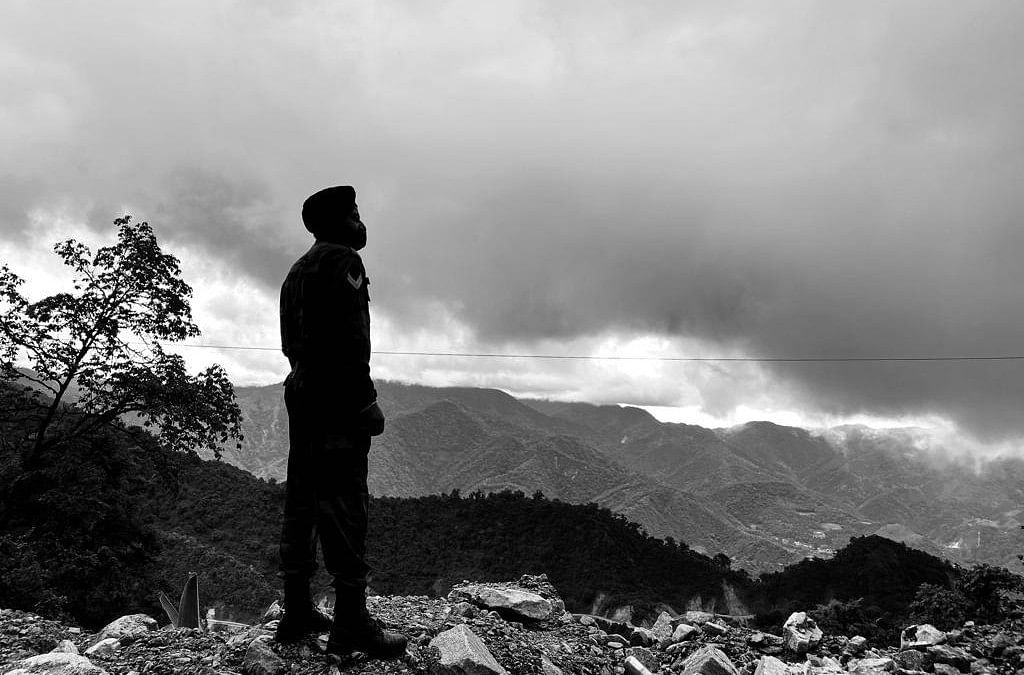Rupa (Arunachal Pradesh): Understanding well that “mountains eat up men”, the Indian Army has sharpened its focus on technology rather than increased boots on the ground in the Eastern Command to tackle an aggressive China.
The technology push by the Army has seen the deployment of a wide range of cameras, sensors, radars, motion detectors, satellite imagery, drones — which are all backed by an indigenous Artificial Intelligence software — to keep a track of the movement of the People‘s Liberation Army (PLA), not just along the LAC but also well within the enemy territory.
While the programme to induct modern technology along the sensitive LAC in Arunachal Pradesh has been on for the last few years, sources in the defence establishment said the ongoing India-China standoff in eastern Ladakh has meant that there is a greater push.
The immediate advantage that India has got because of the greater deployment of technology and their integration besides the chain of command is that Indian soldiers are now fully aware of the Chinese movement along the LAC and have better battlefield transparency.
“The technology has enabled us to get a full holistic picture and now our troops on the ground are aware of the movement of the PLA,” a source said.
“No matter how many soldiers you push into the mountains, they are never enough. It is a fact that mountains eat up men. The focus has to be on harnessing technology which gives us advance information of enemy movement and a full picture of the scenario,” another source said.
Sources underlined that there are enough boots on the ground in Eastern Command to take care of the LAC and more was not needed.
“However, what was needed was technology which is now getting a greater push,” a third source said.
As reported by ThePrint earlier, the Army has also made key changes to its drone formation as part of its technology integration.
The long-range surveillance drones in the Eastern Command have been brought under the Army Aviation Corps from the Artillery as part of the integrated “sensor to fire” focus.
This change has been made across the Army since last year in a phased manner to ensure that all flying assets of the Army remain as a single cohesive unit.
Also read: China’s hypersonic missile test not surprising, keeping it a secret is. India awaits details
Integrated surveillance centre set up by Army & IAF
ThePrint visited an integrated surveillance centre under the 4 Corps to get an insight into the state of alertness in the crucial sector.
This surveillance centre is manned by officers and men from both the Army and IAF.
At the centre, multiple screens on the wall, manned by trained soldiers, keep track of various points along the LAC and even much deeper into the enemy territory on a 24×7 basis.
The technology deployed helps track live movement of vehicles at the Chinese bases close to the LAC.
“While this allows us to keep track of the Chinese movement at the LAC, it also helps us to understand the pattern followed by the PLA at some of their bunkers and posts,” another source said.
Sources explained that simply monitoring how many vehicles visit a particular Chinese post and their time gap gives an insight into any heightened activity and also an input on how many PLA soldiers are there.
While the wide range of sensors give seamless inputs, the biggest advantage is the live satellite imagery that the centre, which was set up earlier this year, is capable of receiving.
Another success is a software called ‘Face Recogniser’, created by Major Bhavya Sharma of the Signals Corps.
This software, enabled by Artificial Intelligence, is able to identify every PLA soldier caught on camera, thanks to the database of pictures and videos captured over a period of 5-6 years.
While earlier it took several weeks to identify PLA soldiers, it now takes less than a minute if he is part of the database, sources said.
(Edited by Neha Mahajan)
Also read: Indian Army initiates Tibetology course for its officers amid LAC standoff
